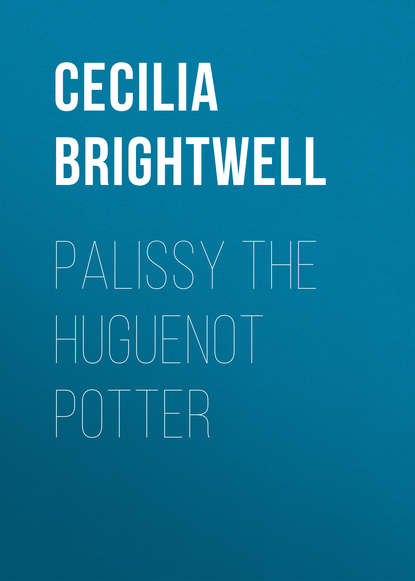По всем вопросам обращайтесь на: info@litportal.ru
(©) 2003-2024.
✖
Palissy the Huguenot Potter
Настройки чтения
Размер шрифта
Высота строк
Поля
The pottery made by Palissy (of which, under the name of Palissy Ware, exquisite specimens are still existing) was very characteristic of himself. He was a naturalist, and had a keen, innate love of the beautiful. To reproduce, in his works, the bright colours and elegant forms of the plants and animals on which he had so long and so often gazed in the woods and fields was his delight, and he founded his reputation on what he called rustic pieces. The title which he took for himself was, Ouvrier de Terre, et Inventeur de Rusticities Figulines – Worker in Earth, and Inventor of Rustic Figulines (i. e., small modellings). These were, in fact, accurate models from life of wild animals, reptiles, plants, and other productions of nature, tastefully introduced as ornaments upon a vase or plate. His rich fancy covered his works with elaborate adornment; but all these designs were so accurately copied from nature, in form and colour, that the species of each can be readily recognized, and there is hardly found a fancy leaf, and not one lizard, butterfly, or beetle, which does not belong to the rocks, woods, fields, rivers, and seas of France.
6
Radiata.
7
Sixty-three years after this time, these opinions of Palissy concerning stones were propounded, in a public disputation by three savants (one of them an inhabitant of Saintes). The faculty of theology at Paris protested against their doctrines as unscriptural. The treatises were destroyed, and the authors banished from Paris, and forbidden to live in towns or enter places of public resort. It was only the contemptuous neglect in which Palissy was held, that saved him from a similar fate.
8
“Francis the First has plainly foretold,
That they of the household of Guise
Would clothe their children in purple and gold,
But the poor folk only in frieze.”
9
“Justum et tenacem propositi virum
Non civium ardor prava jubentium,
Non vultus instantis tyranni
Mente quatit solidâ… ”
10
The master-pieces of Palissy adorn the private collections of the wealthy and noble continental amateurs. Mr. Marryat, in his history of pottery, says, the most extensive and complete collection of his Fayence crockery exists in the Musée Royale, in the Louvre, and in the Hôtel de Cluny; purchased since the death of its late proprietor, M. de Sommerard, by the French government. “These magnificent specimens,” he says, “have been eagerly bought up, from a just appreciation of the merits of their talented and much persecuted countryman.” Mr. M. gives the following description of the Fayence of Palissy. “It is characterized by a peculiar style and many singular qualities. The forms of his figures are generally chaste. The ornaments, the historical, mythological, and allegorical subjects, are in relief and coloured. The colours are generally bright, but not much varied, being usually confined to yellows, blues, and grays, though sometimes extending to green, violet, and brown. The enamel is hard, but the glaze is not so good as that of Delft, and he never succeeded in attaining the purity of the white enamel of Luca della Robbia.” “At a sale at Phillip’s, of Palissy ware, belonging to M. Roussel, of Paris,” it is added, “an extraordinary large vase, enriched with boys in relief, supporting flowers and fruit in festoons, with masked heads, on a fine blue ground, and snake handles, sold for £57 15s. A very curious candlestick, with perforated work and heads in relief sold for £20; equal to $100.”
11
Coligny, who had been wounded by the dagger of an assassin only two days before.
12
Afterwards first physician to Henry IV.
13
It is worthy of note, that a work of great pretensions, published by French naturalists, (“The New Dictionary of Natural History, 1816–1830,”) two hundred and fifty years after Palissy’s demonstrations, gives an incorrect theory on this subject.
14
“He who knows how to die cannot be compelled.”





